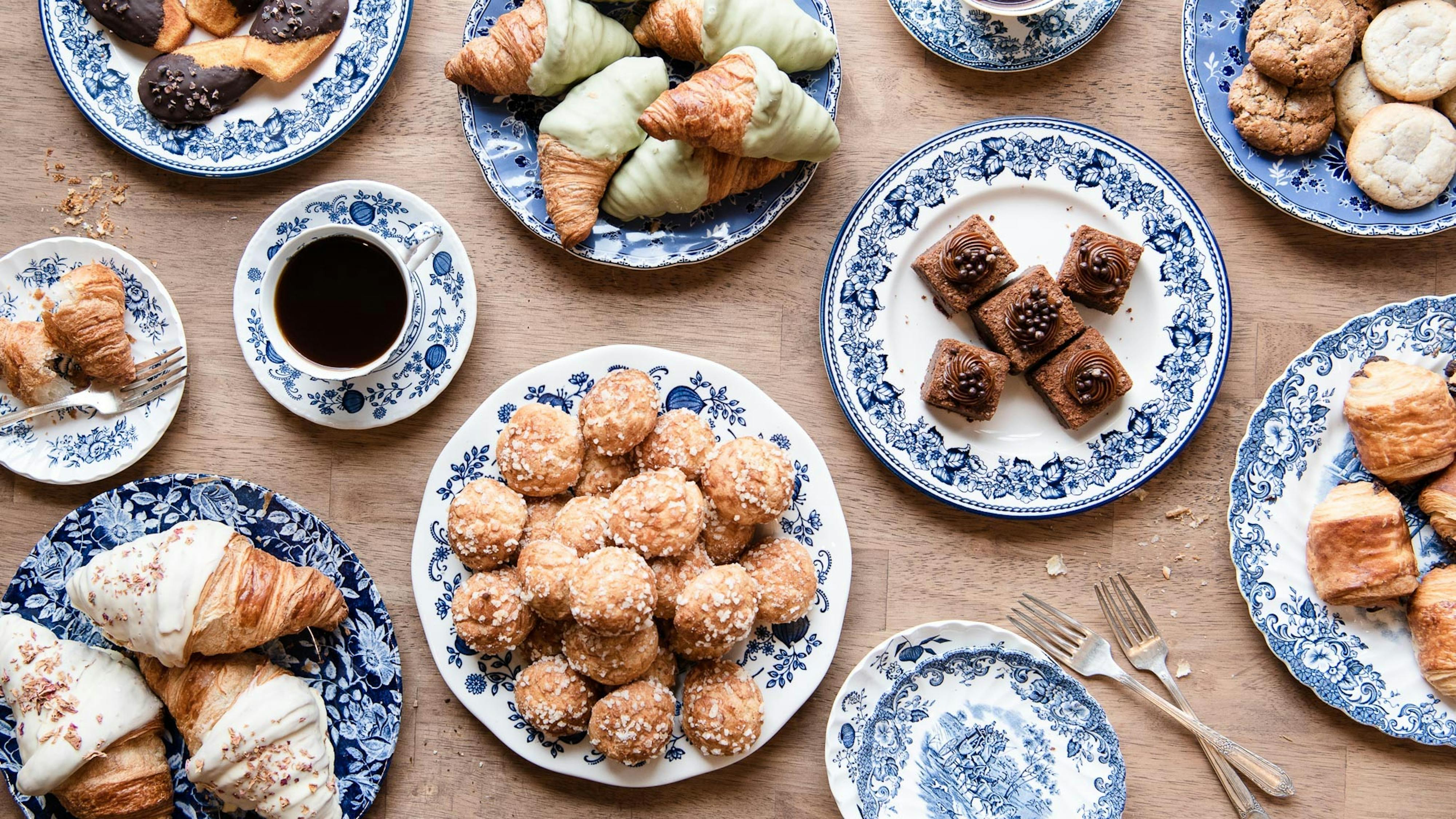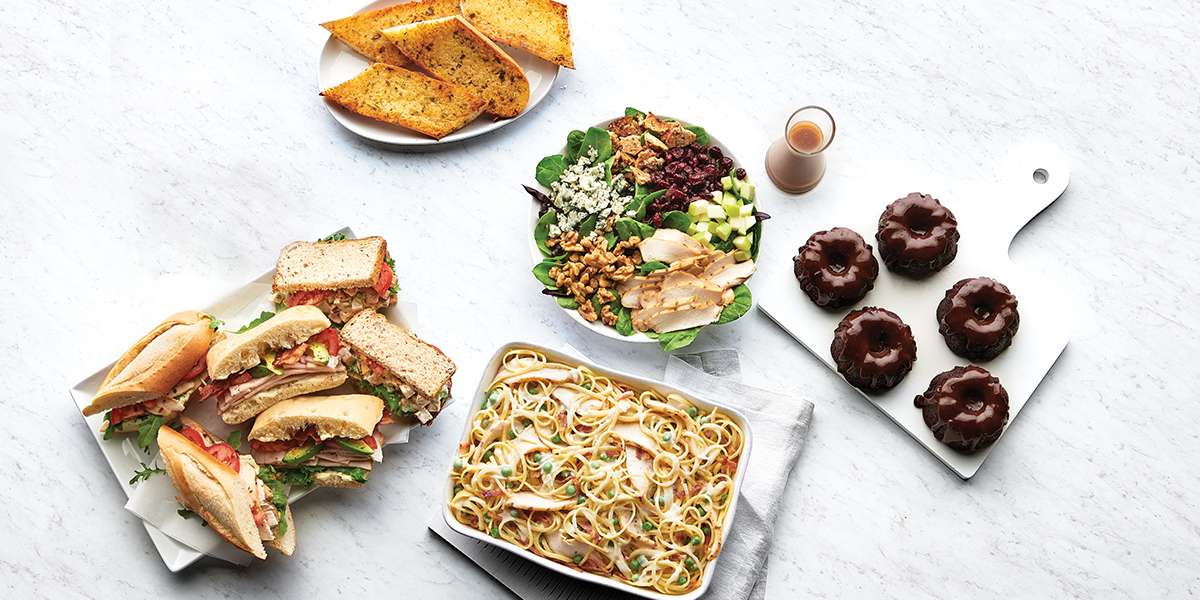Stylish Birthday Catering Maddington for a Sophisticated Touch
Stylish Birthday Catering Maddington for a Sophisticated Touch
Blog Article
Understanding the Art of Bakeshop Products: From Newly Baked Breads to Tempting Pastries and Finger Foods
The intricate art of bakeshop products includes a range of strategies and ingredients that transform basic components right into cooking delights. From the scientific research behind the perfect loaf of bread, where fermentation and gluten advancement play pivotal roles, to the finesse needed for producing split pastries, each facet reveals an engaging narrative of craftsmanship. The flexibility of finger foods shows exactly how flavor and texture can be artfully integrated to involve diverse taste preferences. As we explore these elements, one might wonder: what underlying concepts control the success of these beloved creations?
The Scientific Research of Bread Making
At the heart of every loaf of bread exists a remarkable interplay of chemistry and biology. The procedure of bread making starts with the combination of flour, water, yeast, and salt-- each component playing a critical duty in the final product.
Yeast, a living microorganism, ferments the sugars existing in the flour, producing carbon dioxide and alcohol at the same time. The co2 gas creates bubbles in the dough, triggering it to rise and establish a light structure. The temperature level and humidity during fermentation substantially affect yeast task and, consequently, the bread's flavor and appearance.

Learning Pastry Strategies
Exactly how can one achieve the fragile balance of structure and flavor that specifies extraordinary pastry? Grasping bread methods calls for a deep understanding of components, approaches, and the science behind them. Basic to this craft is the selection of high-grade ingredients-- flour, butter, sugar, and eggs-- each playing a critical function in the last product's taste and texture.
The technique of lamination, which includes folding layers of dough and butter, develops the desired flakiness in pastries like croissants and smoke bread. Precision in temperature level is essential, as butter must remain cold to make sure optimum layers. Likewise, appropriate blending methods, such as the creaming technique for cakes, make sure also unification of air and fat, leading to a light and ventilated crumb.
Additionally, keeping the right moisture levels during baking can considerably affect the outcome, guaranteeing that breads increase correctly and attain that golden-brown coating. Ultimately, the art of pastry additionally requires persistence and method; each attempt improves one's skill and understanding of the elaborate balance called for to produce tempting breads that delight the detects. Proficiency in these techniques inevitably differentiates a proficient pastry cook from an amateur.
Types of Finger Foods
The globe of cooking delights expands past pastries to incorporate a broad range of finger foods, which are commemorated for their convenience and adaptability. These bite-sized treats are best for celebrations, providing a range of flavors and appearances that accommodate diverse palates.

On the sweeter side, bite-sized cupcakes and miniature tarts use a wonderful coating to any kind of dish, appealing to those with a pleasant tooth. Cheese and charcuterie boards offer as article source an innovative option, enabling visitors to personalize their bites with an assortment of meats, cheeses, nuts, and fruits.
Taste Profiles in Baking
Cooking is an intricate dancing of flavor profiles that combines sweet, savory, and umami notes to create a harmonious experience for the taste. Recognizing these accounts is necessary for bakers looking for to raise their creations.
Sweet taste frequently acts as the structure in baked products, with sugars, fruits, and natural sweeteners boosting taste depth. Ingredients such as chocolate and sugar introduce complex pleasant notes that can either control or match other tastes. On the other hand, tasty elements, often located in pastries and breads, give equilibrium and contrast. Ingredients like cheeses, natural herbs, and flavors can transform an easy dough right into a diverse flavor experience.
Umami, regularly neglected in cooking, plays a significant function in improving flavors. Components such as aged cheeses, fermented items, and even particular nuts add to a mouthwatering depth that improves total taste.
Furthermore, the interaction of acidity from components like buttermilk or citrus enthusiasm can lighten up flavors, using click now a revitalizing counterpoint to sweet taste. By thoughtfully integrating these taste profiles, bakers can craft products that resonate with varied tastes, creating a remarkable cooking experience. Ultimately, grasping flavor accounts is vital to innovation on the planet of baking.
Essential Cooking Devices and Ingredients
Comprehending flavor profiles in cooking sets the stage for selecting the right devices and active ingredients that assist in the development of extraordinary baked goods. A reliable collection of cooking pans-- such as sheet frying pans, loaf frying pans, and cake pans-- is crucial for attaining wanted shapes and textures.
In terms of active ingredients, high quality matters dramatically. Flour offers as the backbone of the majority of dishes; choosing the appropriate type-- be it pastry, bread, or all-purpose flour-- can substantially affect the outcome. Sugar not just sweetens but additionally contributes to texture, while eggs function as binders and leavening representatives. Baking powder and cooking soda are crucial for producing lift in pastries and cakes.
In addition, incorporating taste boosters like vanilla extract, flavors, and citrus zest can raise your developments. By ensuring access to these basic devices and ingredients, bakers can with confidence get started on their culinary journey, crafting a varied selection of delightful baked products.
Verdict
Finally, the art of bakery products incorporates an extensive understanding of both imaginative strategies and clinical principles. Mastery in bread making, pastry preparation, and finger food presentation exposes the detailed partnerships between ingredients and processes. Moreover, discovering varied taste accounts improves the baking experience, while necessary devices and components give the foundation for success. Eventually, the captivating world of cooking grows on the unified interaction of science and imagination, causing a myriad of wonderful cooking productions.
Just how can one accomplish the delicate equilibrium of structure and flavor that specifies outstanding pastry? Fundamental to this craft is the choice of premium ingredients-- flour, butter, sugar, and eggs-- each playing an essential duty in the last product's taste and texture.

Recognizing taste accounts in cooking sets the phase for selecting the right tools and components that assist in the production of exceptional baked goods. Exploring diverse flavor profiles enriches the baking experience, while important tools and components offer the foundation for success.
Report this page